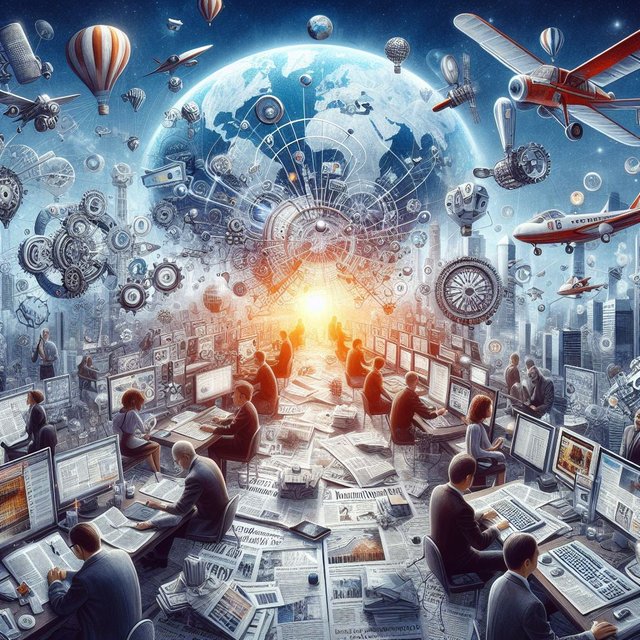The Internet and Traditional Newspaper Industry: A Symbiotic Evolution
Introduction:
The coexistence of the internet and the traditional newspaper industry has transformed the landscape of news dissemination. This article delves into the complex relationship between these two mediums, exploring the challenges, opportunities, and the symbiotic evolution that has reshaped the way we consume and produce news in the digital age.
The Impact of the Internet on Traditional Newspapers:
Digital Disruption: The advent of the internet disrupted the traditional newspaper model. Online news sources provide instant access to information, challenging the traditional print medium's dominance as the primary source of news.
Audience Shift: The internet has reshaped audience behavior, with an increasing number of individuals turning to online platforms for news consumption. Social media, news websites, and digital publications have become prominent sources of information, altering the way news is accessed and shared.
Monetization Challenges: Traditional newspapers faced challenges in adapting their business models to the digital era. The shift from print to online content posed monetization challenges as online advertising revenues often couldn't match the income generated by traditional print advertisements.
Real-Time Updates: The internet enables real-time news updates, allowing readers to access breaking news as it happens. Traditional newspapers, with their print cycle limitations, struggle to match the immediacy offered by online platforms, impacting their competitiveness in delivering timely information.
Opportunities Arising from the Internet:
Global Reach: The internet has given traditional newspapers the opportunity to extend their reach beyond geographical boundaries. Online editions enable newspapers to reach a global audience, fostering a broader and more diverse readership.
Interactive Content: Digital platforms provide opportunities for interactive and multimedia content. Traditional newspapers can enhance their storytelling with videos, infographics, and interactive elements, engaging readers in new and dynamic ways.
Reader Engagement: Social media and online forums facilitate direct interaction between newspapers and their readers. Traditional newspapers can leverage these platforms to engage with their audience, gather feedback, and build a sense of community.
Diversification of Revenue Streams: The internet offers traditional newspapers the chance to diversify their revenue streams. Subscription models, paywalls, and innovative digital advertising strategies provide alternative sources of income in the digital landscape.
Symbiotic Evolution:
Integrated Newsrooms: Many traditional newspapers have embraced digital integration, establishing online platforms to complement their print editions. Integrated newsrooms allow for seamless collaboration between print and online journalists, ensuring a cohesive approach to news coverage.
Cross-Platform Content: Newspapers often repurpose content for multiple platforms. Articles published in print may have extended versions or multimedia components online, catering to different audience preferences and consumption habits.
Brand Recognition: Established newspapers benefit from their strong brand recognition, which can be leveraged in the digital space. A recognizable brand fosters trust among readers, enhancing the credibility of online content.
Adaptation to Digital Trends: Successful newspapers adapt to emerging digital trends. Podcasts, video content, and mobile-friendly formats are integrated into online strategies, allowing traditional newspapers to remain relevant in an ever-evolving digital landscape.
Conclusion:
The internet and the traditional newspaper industry have undergone a transformative journey marked by challenges, adaptations, and opportunities. The symbiotic evolution reflects a dynamic relationship where traditional newspapers leverage the strengths of their established brand and content while embracing the possibilities offered by the digital realm. As both mediums continue to coexist, the synergy between traditional journalism and digital innovation will shape the future of news consumption, ensuring a rich and diverse media landscape for audiences worldwide.
